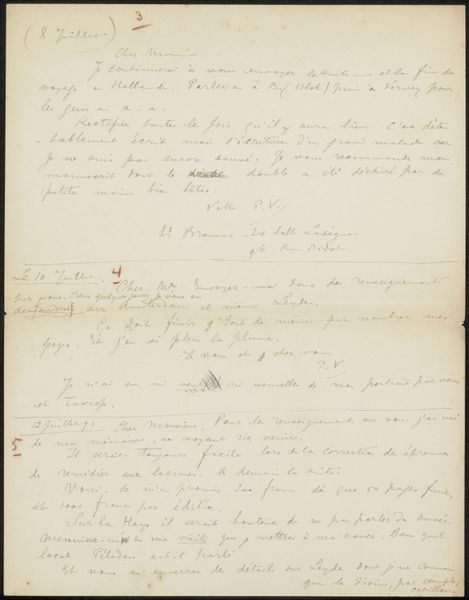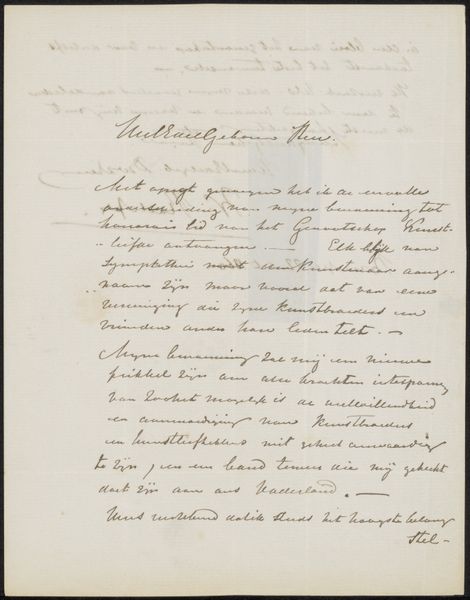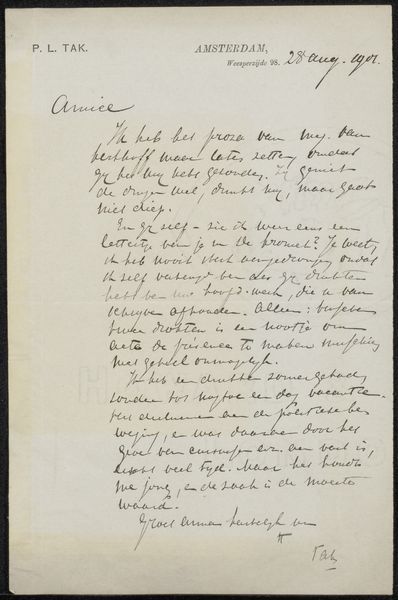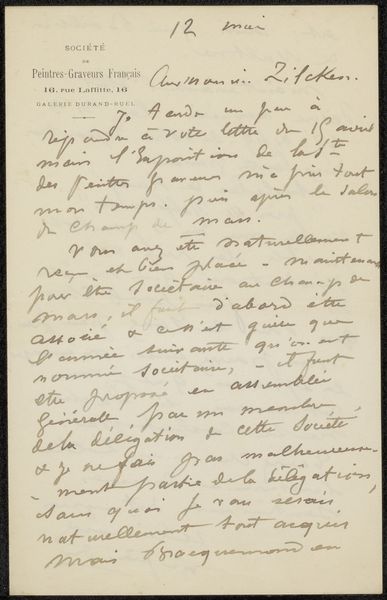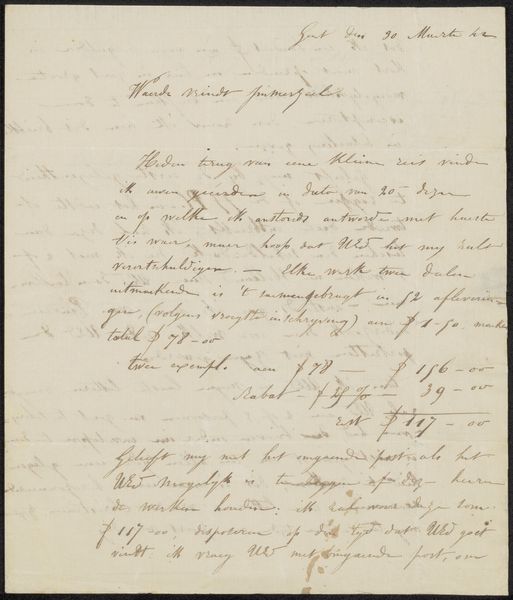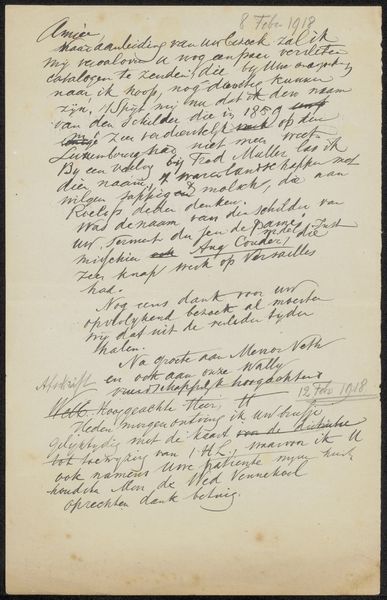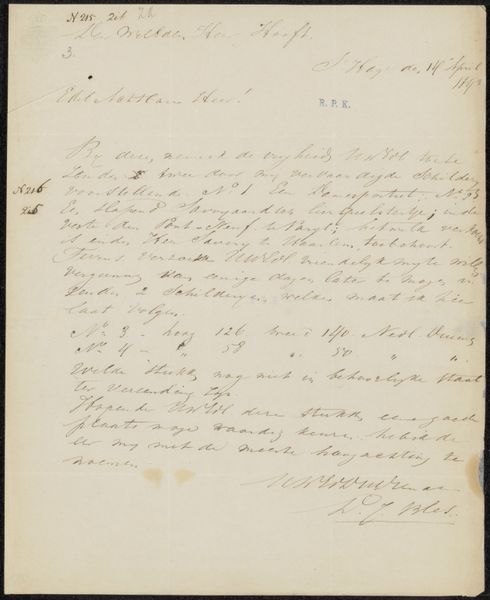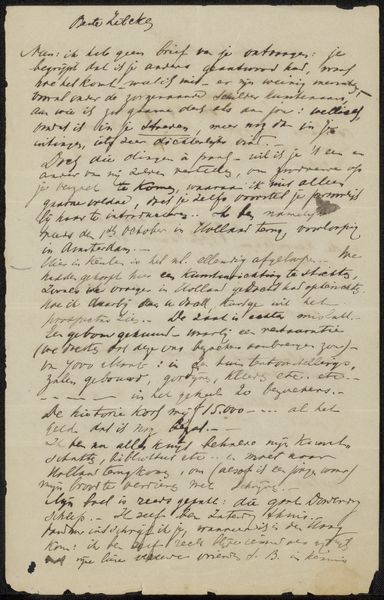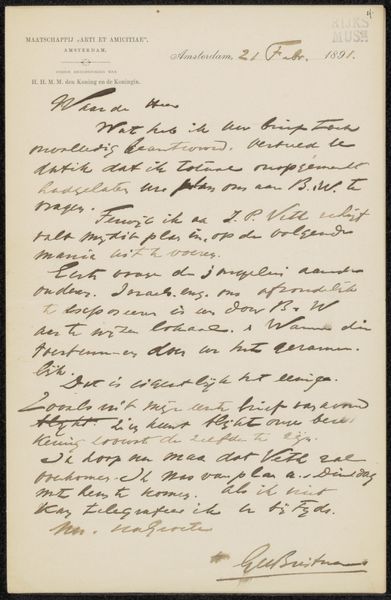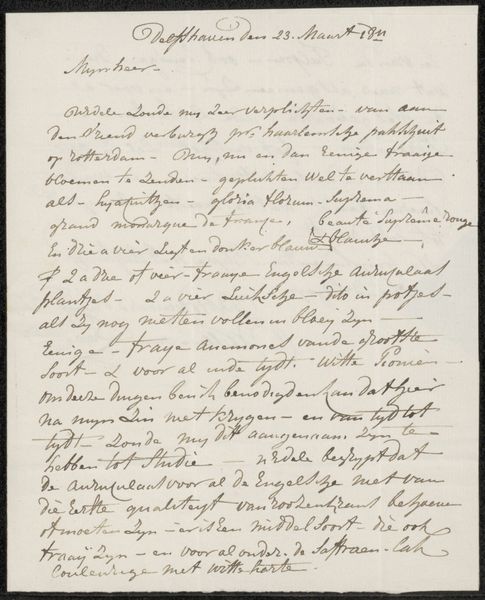
Copyright: Rijks Museum: Open Domain
Curator: So, this is "Brief aan Philip Zilcken" by Paul Verlaine, likely from between 1893 and 1897. It’s a mixed-media piece, primarily ink on paper, currently held at the Rijksmuseum. What strikes you most about it? Editor: It's visually busy but in an intimate way, like stumbling upon someone’s private thoughts. All those handwritten annotations and the way the paper is stained. I wonder, how does this "letter" work as a piece of art? What are we meant to see here? Curator: Well, let's think about the materials first. Verlaine is using inexpensive, readily available paper and ink. This isn't some grand oil painting; it's everyday material transformed. The penmanship itself becomes a crucial element, a physical trace of the artist’s hand and mind. It blurs the line between high art and craft. Why use handwriting? Editor: To show that intimate quality you mentioned earlier? As though we are really viewing the words straight from his mind? Curator: Precisely. Consider, too, the "aged" or "tea stained" look of the paper as determined by AI, which speaks to time and process. Does Verlaine's labor become fetishized by presenting itself on display within a cultural institution, even though it’s a rather raw, unpolished aesthetic? Editor: That’s a perspective I hadn't considered before! So, instead of focusing solely on Verlaine's emotions expressed in the text, we should look at how it's presented, almost like analyzing a manufactured product? Curator: Absolutely. Think about the accessibility of these materials versus, say, oils and canvas, which were traditionally associated with 'high' art. Verlaine subverts that hierarchy by elevating these ordinary materials. The labor and the consumption of art itself is something he is commenting on. Editor: This has definitely given me a new appreciation for the piece. I usually consider content first, but considering the materiality reveals an entirely different aspect to "Brief aan Philip Zilcken." Curator: Exactly. By acknowledging materials and means, we engage in how labor and history impact an artwork.
Comments
No comments
Be the first to comment and join the conversation on the ultimate creative platform.

